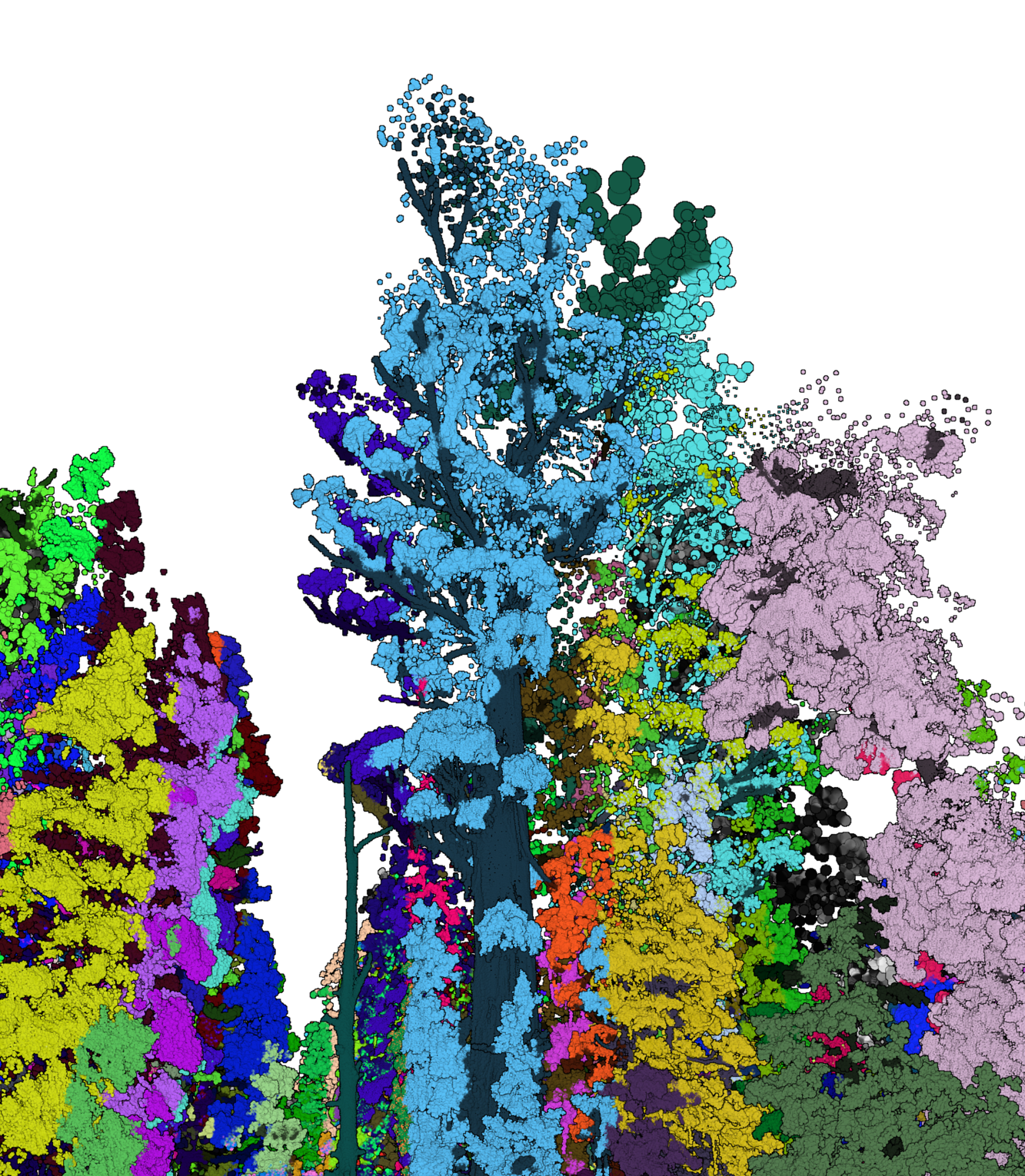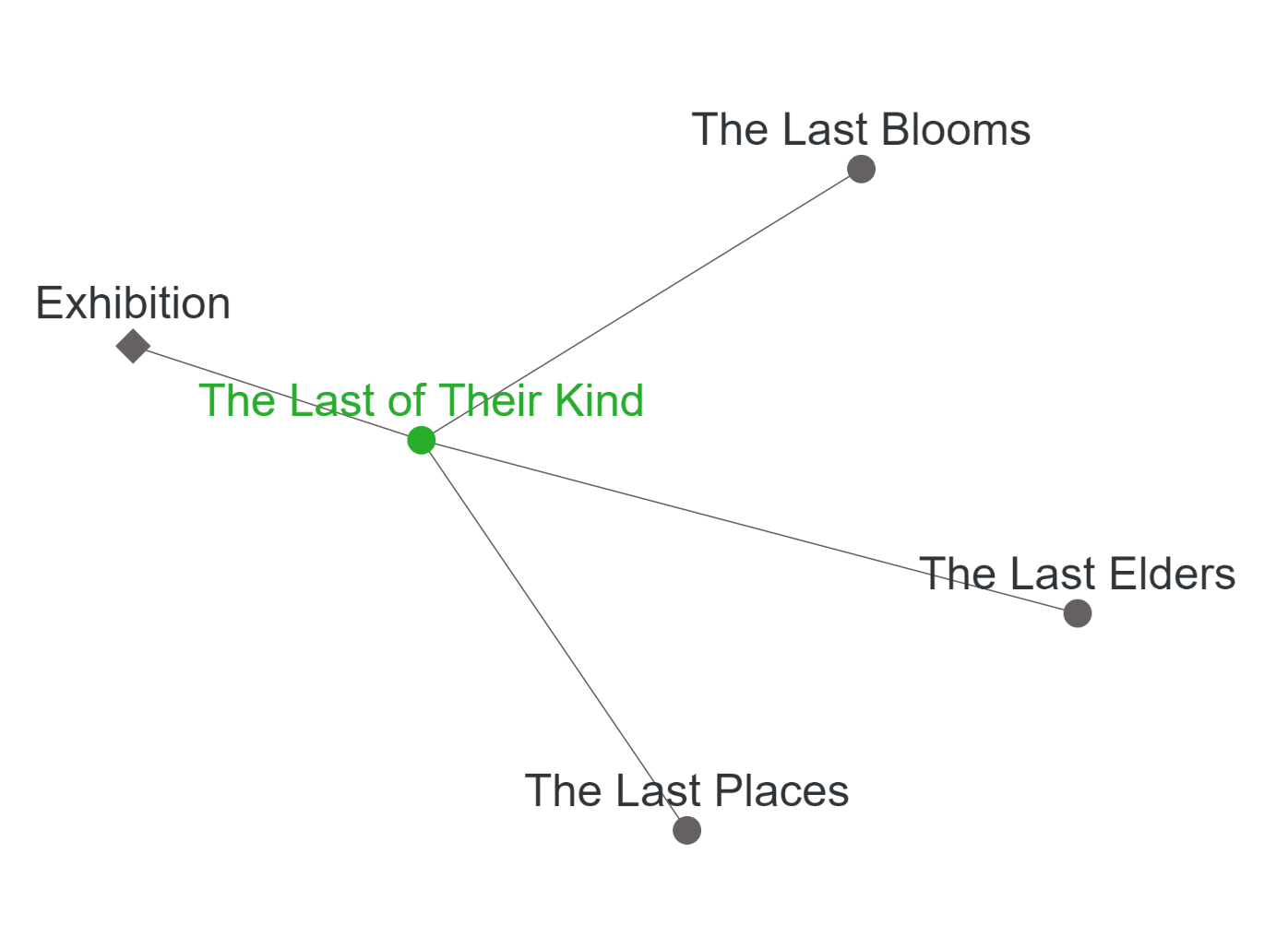The Last of Their Kind
An exhibit for the Association for Computing Machinery Special Interest Group for Computer Graphics (ACM SIGGRAPH) Digital Artist Community (DAC) Exhibition (2022): The Earth is Our Home: Art, Technology, and Critical Action
by Deep Design Lab

The Last of Their Kind is an outcome of a research program that seeks to open possibilities for participatory designing that involves nonhuman lifeforms.
This exhibit gives detail to intertwined and mesmerizingly rich stories of interspecies communities. To provide a brighter contrast with familiar human-centred narratives we focus on plant lives.
Humans often study plants as resources. Instead, we seek to tell stories about the self-directed lives of plants and relevant ethical questions.
The Last of Their Kind: Video from ACM SIGGRAPH.
The Last of Their Kind focuses on individuals, species and communities facing extinction. Some call these beings ‘endlings’. How should humans study and preserve stories of beings that go away, often forever?
Nobody has a complete answer, but we can try to bear witness, record as a lesson, sometimes help. We focus on three different characters. One story follows a group of elders. Another looks at the last representatives of a species. And the last considers a formerly dominant but disappearing community.
Engaging with these beings, we use lasers, magnetic fields, and particle accelerators to generate detailed data representations of plant worlds. Applying analytical tools and artificial intelligence to this data, we seek to capture the richness and nuance of behaviours, capabilities and preferences that characterise nonhuman lives. Interspecies stories are hard to narrate. Their characters have evolutionary backgrounds, life histories, capabilities and scales that are not intuitive to humans. Our imaging technologies span from kilometres to microns and expose histories and futures from new perspectives: high above a rainforest, deep within a tree trunk, or only visible in the infrared.

These stories attempt to create a narrative world that can support multiple perspectives, including nonhuman. We believe such spaces are a foundation for fairer and more hopeful interspecies futures.
Biographies
The authorship of this exhibit belongs to Deep Design Lab, a creative collective. The project team includes:
Alexander Holland, at the University of Melbourne, investigates the digital and physical characteristics and design opportunities of past and future environments. His experiments expand the reach of participatory design to include nonhuman as well as human inhabitants.
Julian Rutten, at Swinburne University of Technology, studies the intersections of culture, nature, and technology. His research focuses on remote sensing and three-dimensional imaging techniques that aim to support more-than-human habitats. Together, the team has extensive design, art and architecture experience with many international exhibitions and publications to their credit.
Stanislav Roudavski, at the University of Melbourne, researches designs for animals, plants, rivers, and rocks as well as humans. His experiments contribute to knowledge by using scientific evidence and advanced technologies in concert with cultural, political, and historical analyses.
Acknowledgements
Biologists:
Rebecca Miller, Royal Botanic Gardens
Darren Le Roux, Australian Capital Territory Parks and Conservation Service
Phil Gibbons, Australian National University
Yoav Daniel Bar-Ness, Tasmanian Geographic
Imaging specialists:
Jay Black, the University of Melbourne
Anton Maksimenko, the Australian Synchrotron
Image Credits
The image of beetle on spathe is from Sayers, T., Steinbauer, M., Farnier, K., & Miller, R. (2020). Dung Mimicry in Typhonium (Araceae): Explaining Floral Trait and Pollinator Divergence in a Widespread Species Complex and a Rare Sister Species. Botanical Journal of the Linnean Society, 193, 375–401. https://doi.org/10/gjkgwx
Other images are by the authors.
Childrens